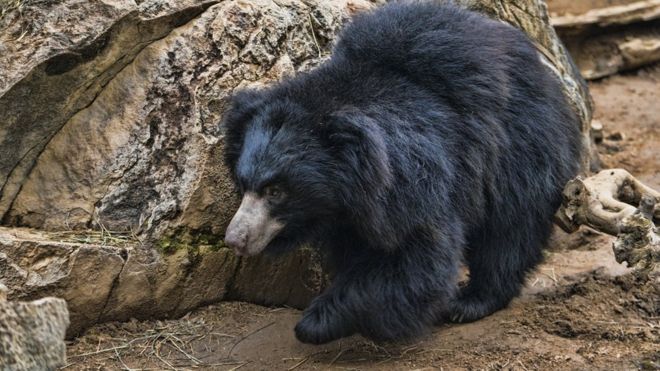The scene at the Sriracha Tiger Zoo is degrading and depressing: Tourists dangle raw chickens from fishing poles over a bleak pen where the cats snarl and fight for the food.
Although no criminal charges for animal trafficking were ever brought against Chaiyamat, Galster's research into her and her cohorts provided him with key insights into how the Hydra gang moved its product. He learned, for instance, that pangolin scales, easily mistaken for wood chips, are often smuggled inside potato sacks, while tiger and lion skeletons are frequently disassembled and crammed, skulls and all, into plastic body bags. (The putrid—and telltale—scent of lion and tiger bones can become an occupational unpleasantry for those who smuggle them.)
Rhino horn, hard as a block of wood, can be flown in suitcases or duffel bags—traveling either intact or chopped into pieces that get wrapped in tinfoil or bubble wrap and then surrounded by shampoo bottles or deodorant to mask the foul odor.
Elephant tusks travel in all sorts of ways: inside tin containers labeled “telecommunications equipment,” in hollowed-out logs at the bottom of a shipment of timber.
Some of the contraband reaches Thailand by cargo ship before journeying to Laos and onward to points north. To get it across the Thai border, the product is either hauled by truck across the handful of bridges on the Mekong River or packed onto what Galster calls “banana boats,” wooden longboats with a single outboard motor, and ferried through darkness.
“This is the mother ship of the zoos,” Galster tells me as we pull into the parking lot of the Sriracha Tiger Zoo, a popular tourist attraction and reputed big-cat-laundering center. We're two hours south of Bangkok, near the seaside city of Pattaya, a favored hangout for the Hydra gang.
For years, the Sriracha Tiger Zoo has appalled Galster. He claims that sources familiar with what goes on inside have painted a harrowing picture of slaughter.
He says he was told that after tigers outlived their usefulness, butchers routinely knocked out the beasts with powerful drugs, slit their throats and dismembered them, then packed the pieces into vehicles for transport to Laos. The zoo always kept about 500 tigers on hand, one source told him, so that nobody would notice if a few went missing. The place was under police investigation for a while, but the attention faded away. Still, Galster suspects the zoo may be laundering tigers. Demand for tiger parts remains strong in Vietnam and China; the hottest new product on the market is a supposed aphrodisiac, extracted from the bones and sold in capsule form for $300 per pill.
Near midnight, in the heart of the city's red-light district, Steve Galster ducks into three clubs in rapid succession—hoping to pick up clues about the syndicate's latest activities.
We follow walkways lined with flowering trees, past throngs of tourists, almost all of them Chinese. The scene was degrading and depressing: At the Shoot 'N' Feed attraction, young men armed with pellet guns attempted to bring down chunks of raw meat suspended in tin boxes over a stark concrete enclosure filled with hungry, pacing adult tigers. ****her down the path, tourists dangled raw chickens from fishing poles over another bleak pen containing a dozen more of the huge, beautiful animals. To the delight of their tormentors, the cats snarled and fought one another for the food. Undercover investigations by wildlife advocates here and at a similar zoo in Thailand have produced videos that show what tourists apparently come to experience: chained tigers being forced to roar for photos, cubs separated from their mothers being bottle-fed by visitors.
Such zoos have been able to flourish in Thailand because of the wealth and political influence of those who run them—and the hopelessness of the public. “You don't have people power here,” Galster tells me. “You've got corrupt rich people getting away with it.” Nobody knows exactly how many tiger “sanctuaries” exist in the country, and it took a massive media campaign, including an investigative article in National Geographic, to prod the government in 2016 to shut down the Tiger Temple.
Later that night, Galster tells me that there's another piece of business he wants to check on while he's in Pattaya. He's been trying to track down a target he refers to as “Jayhawk,” a top Hydra associate who has dropped out of sight for months. Galster knows that Jayhawk is an enthusiastic patron of the beach town's tawdry sex clubs, favoring several bars and strippers in particular. Galster, who speaks Thai and knows the scene well, is hoping to find out whether Jayhawk has changed his patterns—and perhaps pick up clues about the syndicate's latest activities.
The taxi drops us off near midnight on Walking Street, the heart of the red-light district. Galster ducks into three clubs in rapid succession, each with a similar motif: a dozen Thai women dancing desultorily to techno music on a mirrored stage beneath strobe lights, surrounded by libidinous foreigners. At the fourth, after making inquiries with the bar hostess and the girls, Galster finds the woman he's looking for: “Doll,” one of Jayhawk's regulars. She's emerged from the dressing room and perches on a stool beside him. She's skinny, wears braces, and looks to be about 16. In a whisper, Galster tells me she's in her 30s. “She had the orthodontia to make herself look young,” he tells me.
Galster and Doll make small talk in Thai, and then he cuts to the chase: “Has the big, scary-looking Vietnamese thug who likes you been around lately?” he asks.
“Yeah, we were together last weekend,” she replies. He was here with a younger friend, Doll tells Galster.
As we head for the door, Galster tells me that he'll try to identify the young companion through his police contacts. But he's gleaned one important fact from the encounter with Doll: Jayhawk is back in the game.
After cops hauled Boonchai Bach off to jail in 2018, Hydra appeared derailed. Conservationists around the world cheered the development. Bach faced charges of rhino-horn trafficking and was eyeing four years in prison if convicted.
As the trial began last year in a provincial courtroom in Samut Prakan, Bach's lawyers insisted that their client was a victim of mistaken identity, Galster recalls. The prosecution, seemingly short on initiative, decided to rely predominantly on the testimony of its star witness, Nikorn Wongprajan, the airport quarantine officer. As long as he stuck to his story and told the court what he had already told cops—namely, that he'd been a key cog in a Bach-hatched scheme to move horns through the airport—the man believed to be running Hydra would end up in prison.
Galster is still chasing the man who he suspects sits atop the Hydra cartel. But he's trying a new approach—a Hail Mary attempt to appeal to the smuggler's conscience.
But when it came time for Wongprajan to identify the head of the organization, he refused to point at Bach, seated in the defendant's chair. Maybe he was thrown off by Bach's changed appearance—he had let his hair grow out and wore glasses. But it might have been out of pure fear. “I'm not sure,” he said nervously. “I don't know who this guy is.” On January 29, 2019, as Galster and Poolsub looked on in dismay, the judge dismissed all the charges. The suspected Hydra boss was immediately hustled out of the courtroom by two escorts, one of whom veered off and took Poolsub aside.
“I remember you,” he said in a faux-polite tone.
“Oh yeah? How's that?” Poolsub shot back.
The two men exchanged a few more tense words. Then the escort slipped into a vehicle with Bach and drove away.
After that, Bach disappeared from circulation. Meanwhile, Wongprajan was returned to a jail cell to await his own trial for his role in the rhino-horn scheme. Galster wasn't shocked. “They either threatened Wongprajan or promised him money,” he says.
Galster is still chasing Boonchai Bach. But he's refraining, for now, from trying to put him behind bars. Instead he's testing a new approach—a Hail Mary attempt born of frustration. During our stopover in Nakhon Phanom, Galster wrote a message to Boonchai Bach on Freeland letterhead. The note, a quixotic appeal to the smuggler's conscience, invited him to contribute to Project RECOVER, an initiative recently put together by Freeland and IBM. It aims to use confiscated funds from traffickers to set up programs that help beleaguered populations of elephants, tigers, rhinos, and other wildlife recover from poaching. “We would like you to consider joining this program,” Galster wrote in Thai. “Here is a chance to be on the right side.”
Galster dropped the letter with a clerk at the reception desk at Bach's apartments on our way to Nakhon Phanom airport. Three months later, he is still waiting for a reply.
Joshua Hammer wrote about a Ukrainian assassination mystery in the March 2018 issue of GQ.
A version of this story originally appeared in the June/July 2019 issue with the title "Hunting The Rhino-Horn Cartel."




 Reply With Quote
Reply With Quote






